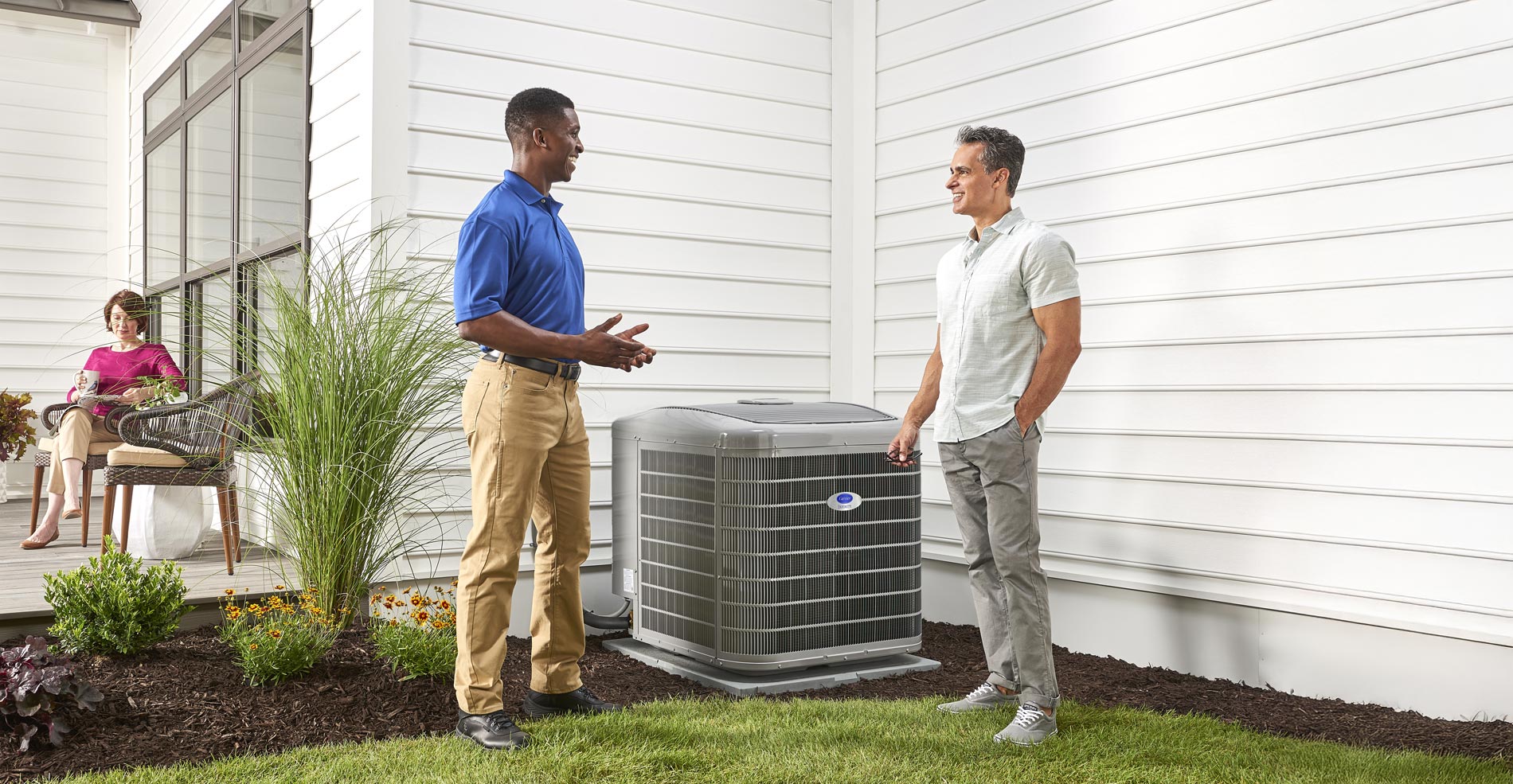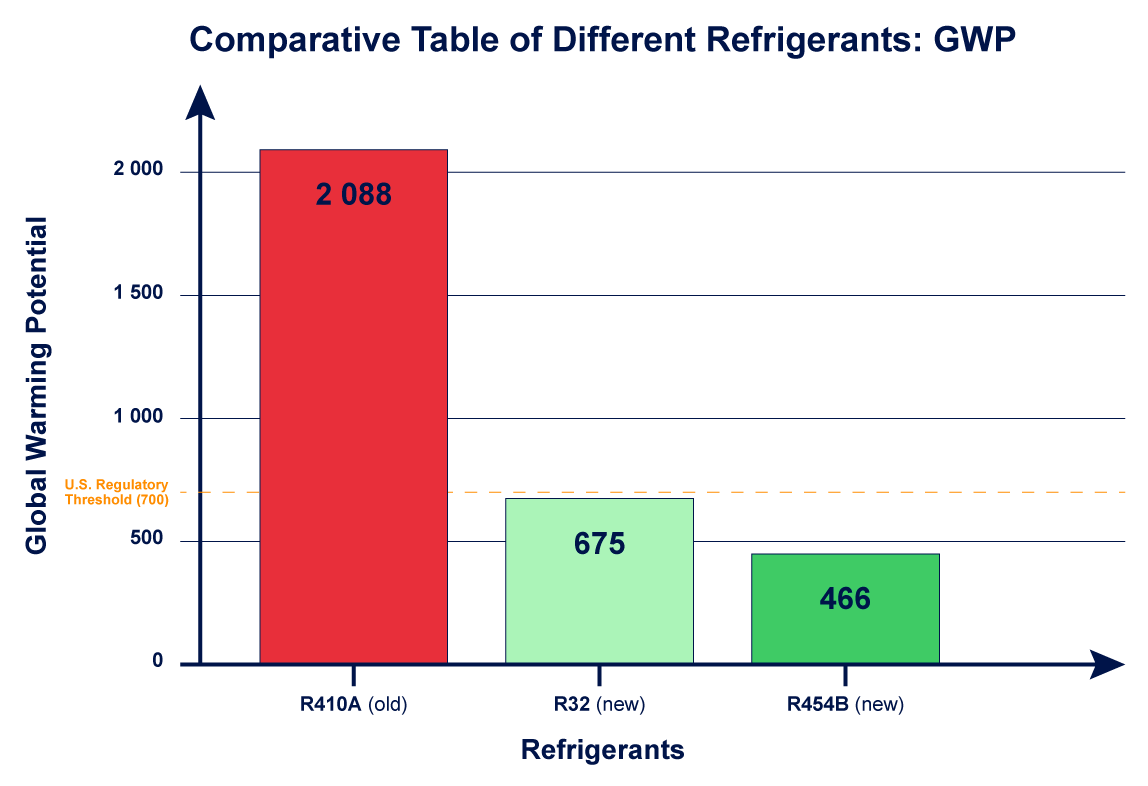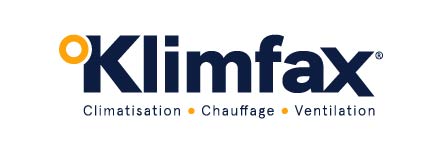New refrigerants to help fight climate change.

The heating, ventilation, and air conditioning (HVAC) industry is on the verge of a major transformation.
To combat climate change, new, more environmentally friendly refrigerants are set to become the new standard. This shift, already underway in the United States, will have significant impacts on all industry players in Canada.
Why is this transition necessary?
Since the early 2000s, R410A refrigerant has been widely used in HVAC systems. However, due to its high global warming potential (GWP*), it is now being gradually phased out. The United States has already taken this step, banning the production of new equipment using R410A as of January 1, 2025. This measure aims to significantly reduce greenhouse gas (GHG) emissions. Although R410A will remain available for servicing existing systems during a transition period, its replacement is inevitable.
* GWP (Global Warming Potential): The climate impact per kilogram of refrigerant, compared to CO₂. This means that 1 kg of R410A has the same warming effect as 2,088 kg of CO₂ over a 100-year period.
What are the new replacement refrigerants?
The R32 and R454B refrigerants are replacing R410A in order to reduce global warming potential. In addition to being mildly flammable, these two new options were selected for their:
- Excellent energy efficiency;
- Low environmental impact, significantly reducing GHG emissions;
- Reduced refrigerant charge requirements in systems;
- Ease of use, requiring only minimal training for technicians.

Understanding Refrigerants: Safety and Performance
Although the old R410A refrigerant is non-flammable and poses no risk of explosion, it is important to put the characteristics of the new refrigerants (R32 and R454B) into perspective by comparing them to a commonly used substance such as propane (R290).
As shown in the comparison table below, both new refrigerants present only a very low risk of explosion. Furthermore, R32 and R454B are safe and reliable options that meet environmental standards.
Comparative Table of Refrigerants
| Refrigerant | R410A (old) | R32 (new) | R454B (new) | R290 (propane, for reference) |
|---|---|---|---|---|
| Energy efficiency | High | High | High | Very high |
| Global warming potential (GWP) | 2 088 | 675 | 466 | 3 |
| Toxicity | Non-toxic | Non-toxic | Non-toxic | Non-toxic |
| Flammability | Non-flammable | Mildly flammable | Mildly flammable | Highly flammable |
| Explosion risk | None | Very low | Very low | High and real |
| Safety | Safe | Very safe | Very safe | Less safe |
Safety is a priority.
Equipment using these new refrigerants is designed to be safer. In fact, units over 12,000 BTU are required to be equipped with refrigerant concentration detectors. In the event of a leak, the system automatically shuts down, and the fan activates to expel any gas that may have escaped. There is no risk of explosion, given the low concentration required for flammability and their high auto-ignition threshold.
«These new refrigerants are designed with strict safety measures to protect users and reduce greenhouse gas emissions.»
The Regulatory Situation in Canada: Anticipating Change
In Canada, no official ban on R410A is in effect as of 2025. However, it is highly likely that Canadian regulations will soon follow the U.S. trend, with similar laws expected to be adopted in the short to medium term. Equipment manufacturers are already anticipating this transition, which is gradually influencing the Canadian market.
This transition is a necessary step for the industry, and for Klimfax, it is essential to prepare for it—particularly through proper training of its teams.
Get Ready for the Future of HVAC with Klimfax
At Klimfax, we are committed to supporting you through this transition by providing the information and resources you need to understand the key issues and best practices related to the new refrigerants.
Stay tuned for our upcoming team training sessions and updates to ensure a smooth and safe transition toward a greener future for the HVAC industry.












